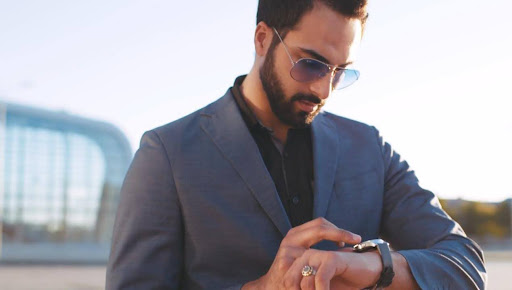
Introduction:
It can be challenging to balance business casual, especially in an environment where professional standards are high. Many offices adopt smart casual styles, blending casual clothing with a professional look. Understanding the unwritten norms of what is proper is crucial because the dress code might change depending on the situation. It’s important to keep looking professional, but you also want to be at ease without going overboard.
The expectations can differ from region to region. In places like the UAE and Saudi Arabia, there’s often a greater emphasis on maintaining traditional standards. Cultural differences also influence what’s deemed appropriate, and in some cases, even gender presentation could affect the type of business-appropriate attire. That said, finding a balance between looking professional and expressing your individual expression can be challenging but achievable, especially as regional variations play a part in setting the tone for what’s suitable. Outfits may include button-downs for men or blouses and skirts for women, but it’s crucial to consider context when choosing your look.
What is business casual?
The popular dress code known as “business casual“ combines formal wear with a laid-back attitude. It is made specifically for the office, enabling workers to be comfortable and presentable. This style allows you to exhibit your personality while still following workplace regulations, unlike standard corporate office clothes. Since the look might vary widely, it’s critical to know what will work in your particular setting.
Asking a manager or HR staff for advice is a smart idea if you’re not sure what to wear. In general, business casual clothing works for conferences, regular office wear, and even professional gatherings. Think about how you want to come across to co-worker’s and the C-suite while choosing your attire. Always strive for a polished yet casual appearance to make sure you blend in and feel at ease.
The term “business informal” describes a dress code that combines comfortable attire with a complex presentation.
The term “business casual” describes a dress code that combines comfortable apparel with a sophisticated presentation. It allows men and women to express their individualized expression while still adhering to professional standards. In places like Saudi Arabia and the UAE, business casual attire can vary significantly based on local cultural variations but generally includes relaxed clothing that maintains a degree of formality. Ideal outfits might include tailored shirts, blouses, and smart trousers or skirts, striking a balance between looking professional and feeling at ease.
Business casual ideas
When selecting business casual attire, consider how they might reflect both your unique style and the standards of your company. Emphasizing current senses while preserving historic values can build an outfit that fits the importance of a dress code. Incorporate pieces that are suitable for a professional setting yet comfortable enough for everyday wear. Options such as blazers over casual shirts or smart shoes paired with tailored jeans can achieve this balance, making you appear both professional and approachable.
What are suitable business casual colours?
When planning the perfect business casual storage room, think of it as a hybrid between casual and professional wear. Start with comfortable clothing options like black dress pants or a subtle pink blouse. Choosing neutral colours such as beige, tan, gray, black, navy, white, or brown for your base pieces sets a solid foundation. This palette allows for flexibility and ensures a polished appearance suitable for any workplace.
To bring your outfits to life, consider incorporating pops of colour through accessories. A colourful handbag or shoes can make an outfit memorable while still maintaining a professional appearance. Bold colours can add interest and flair, elevating your look without straying too far from workplace attire norms. Just remember to choose pieces that complement your neutral bases, such as a matching belt or jewellery, ensuring a cohesive and stylish finish.
Additional tips for business casual attire

Creating a business casual wardrobe is all about having a curated selection of versatile options that fit into a professional atmosphere. Start with essential items like dress slacks, tailored blouses, and a well-fitted button-down shirt. A classic blazer can instantly elevate your look, making it suitable for most business casual settings.
Key Pieces to Include
Dark wash jeans:
opt for styles that are polished and free from visible stains and excessive holes.
Khaki pants:
A versatile choice that pairs well with many tops.
Knee-length skirts:
ideal for maintaining a professional appearance while being comfortable.
Leather shoes:
Choose styles that are both stylish and appropriate.
Style Considerations
Stick to solid colours and a muted colour palette to create a cohesive look. Avoid patterns that might appear too casual or distracting.
Ensure your clothing fits well; nothing too tight or baggy. Items should feel comfortable and not sloppy.
Be attentive to details:
Ensure no missing buttons, wrinkles, or torn threads. Iron your clothing to maintain a polished look.
Avoid wearing revealing clothing and aim for understated styles that project professionalism.
Practical Tips
Choose wisely and invest in pieces that can be mixed and matched to create multiple looks.
Maintain your clothes in good condition to avoid any shreds or visible stains. Regularly assess your collection to ensure everything remains appropriate for a business casual wardrobe.
Have a few casual items that can transition seamlessly to more professional outings, ensuring you are always prepared and looking your best.
What not to wear in business casual settings
Key Elements for a Professional Look
When planning your outfit for a business casual environment, particularly in a healthcare office, consider the following essentials:
High-waisted slacks and processed jeans are great options that pair well with a variety of tops while maintaining a polished appearance.
opt for solid colours over bright patterns to project professionalism. Neutral shades like burgundy and classic tones can create a sleek look.
Heeled boots and high heels can elevate your outfit, but ensure they are comfortable for movement—aim for four inches or lower for practicality.
Accessories and Jewellery
Keep accessories minimal: long, dangly earrings, chunky necklaces, and distracting jewellery might detract from a professional image. Stick to more understated pieces.
Avoid hats and over-the-top accessories; instead, consider simple hair clips or headbands.
Ensure your undergarments are not visible and are comfortable for long hours of wear.
Clothing Considerations
Steer clear of low-cut shirts, crop tops, and scoops too low, as they can be seen as unprofessional.
Cropped tops and sweatpants are typically inappropriate in a healthcare office setting. Instead, opt for tailored options.
Shorts like long walking shorts can be suitable in hot states, provided they adhere to dress code guidelines and are not too tight or too short.
General Guidelines
Respect the dress codes outlined by your workplace. Not adhering to clear policies can reflect poorly on your professionalism.
When in doubt, prioritize comfort and professionalism. Garments should be free from unwanted holes and should fit appropriately without being too tight or baggy.
If team pride is accepted, incorporate it subtly through a base cap or simple accessory, but ensure it aligns with overall dress code expectations.
What is business casual for women?

When dressing for a casual dress code, it’s important to create a comfortable yet professional vibe. Women have a variety of choices that can blend both styles. opt for tops like polo shirts or laid-back blouses that offer flexibility in your wardrobe. Remember to embrace softer hues and unique prints to keep your look interesting without being too flashy. Sweaters and turtlenecks are great layering pieces that add warmth while maintaining a polished appearance.
While experimenting with your attire, choose pieces that fit well and enhance your figure. Avoid anything too extravagant or casual, like overly loose items. A good balance of formal and relaxed can help you create an effective look. Steer clear of overly flashy styles; instead, focus on classic garments that feel like you but fit within a business casual framework. With the right pieces, you can confidently express your style while still adhering to workplace expectations.
Are jeans business casual?
The concept of business casual can be a little vague and often varies depending on the company, sector, and even location. Jeans may be acceptable in some businesses as part of this dress code, particularly if they are dark in colour and free of rips or holes. It’s critical to read the room and comprehend the potential dress code for a given occasion.
Professionals like you might be wondering how to wear jeans and yet appear put together.
As professionals, you may wonder how to incorporate jeans into your wardrobe while still looking polished. The key is to choose pairs that offer a stretch fit for comfort but maintain a tailored look. Pairing your jeans with a blazer or a smart shirt can elevate your outfit. Each workplace can have varying interpretations of business casual, so it’s a good idea to learn what works best for your environment and to be prepared to adapt your style as needed.
Business casual vs. business professional: What’s the difference?
Business casual
When building your business casual wardrobe, aim for a polished yet comfortable look. You can opt for items like shirts with small patterns or brighter colours that add a touch of creativity without being overly formal. Combining these pieces with clean, well-fitted trousers or tailored jeans can strike the right balance between relaxed and professional.
Formal accessories like ties may be added to improve your overall look while still following the dress code. Make sure your clothes are wrinkle-free and properly pressed because it’s crucial to keep them looking put together. You can keep that business casual attitude while being prepared for a range of events by selecting pieces that are adaptable and can be dressed up or down.
business professional
When thinking about business casual, many wonder if jeans fit this attire. The goal is to look professional yet comfortable. While dark blues and black jeans can often be acceptable, it’s best to avoid loud patterns and too much wear. For a polished look, opt for jeans paired with a button-down shirt or a sleek blouse. Adding a nice belt and dress shoes or flats will enhance the outfit. On days when you want more elegance, consider a skirt suit or pantsuit in natural colours like gray or navy. Polished silhouettes with heels or cufflinks can elevate your style even further, making your choices feel professional without being overly formal.
Business-casual dos and don’ts
When choosing attire for work, it’s key to select pieces that are both appropriate and clean. You want to look polished without being flashy or overdressed. Casual does not mean sloppy, so always ensure your clothing is neat and iron your items for a crisp appearance. During colder temperatures, a light sweater or a tailored jacket can keep you comfortable while looking sharp. For important meetings, it’s best to avoid anything that might make you seem underdressed. Instead, aim to match your clothing to the occasion, ensuring you draw the right kind of attention. Remember, a well-thought-out outfit can make an impression that is as effective as an advertisement for yourself. So, choose business casual wisely!
Conclusion:
Mastering business casual dressing involves a balance of professionalism and comfort. By following key rules such as selecting neat and clean attire, avoiding flashy elements, and ensuring your clothing is well-fitted and ironed, you can create a polished look. It’s necessary to dress properly for important meetings, such as wearing a light sweater or a fitted jacket when the weather cools down. In the end, wearing business-appropriate casual attire can boost your self-esteem and leave a lasting impression by displaying your ability to combine business with personal flair.




